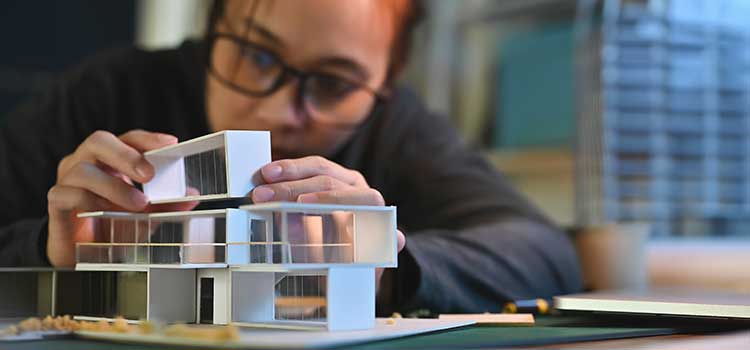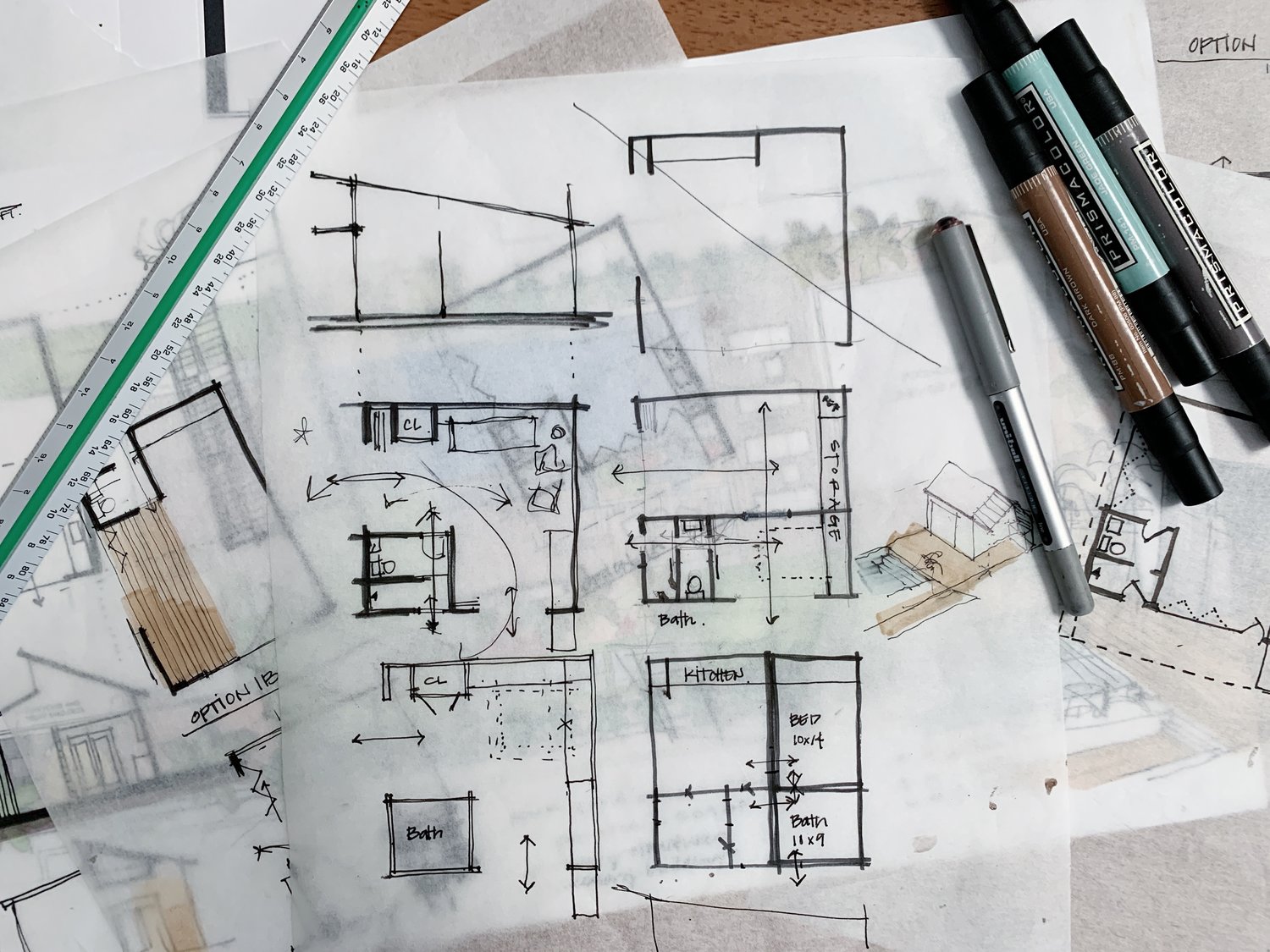Understanding the Diverse Career Paths Available for Aspiring Architect
As a hopeful Architect, you have a globe of career paths waiting for you. Whether you're attracted to typical architecture or the nuances of lasting layout, there's a niche that aligns with your rate of interests.
Traditional Style: Creating Structures and structures
Standard style concentrates on making structures and frameworks that mix performance with visual appeal. Your designs can reflect social heritage, showcasing neighborhood practices while fulfilling contemporary requirements.
You'll establish abilities in composing, model-making, and site analysis, allowing you to picture and communicate your ideas effectively. Involving with customers, you'll require to recognize their vision and convert it into feasible layouts.
Furthermore, building codes and sustainability methods are vital in your work, guaranteeing your structures are environmentally friendly and safe. As you expand in your profession, you'll find possibilities in household, business, and even remediation tasks, each offering special difficulties. Accepting traditional style leads the way for a satisfying occupation that admires the past while shaping the future.
Urban Preparation: Forming Communities and Public Spaces
As an ambitious Architect, you can play a vital role as a metropolitan coordinator, transforming exactly how areas function and connect. By using community involvement strategies, you'll ensure that residents have a voice in forming their environment. Plus, incorporating lasting style concepts will assist develop areas that not just meet today's requirements yet likewise safeguard the future.
Function of Urban Planners
While numerous might think of engineers as the single visionaries behind buildings, urban organizers play an essential role in shaping the broader landscape of areas and public rooms. By teaming up with different stakeholders, you'll assist create parks, transportation systems, and domestic locations that advertise social communication and access. Your experience in spatial style and community characteristics permits you to picture future development while preserving social heritage.
Neighborhood Interaction Methods
Effective area involvement techniques are crucial for urban organizers to ensure that the voices of residents are listened to and valued in the planning procedure. To foster purposeful dialogue, you need to prioritize open discussion forums and workshops where neighborhood participants can express their concepts and worries. Use studies and social media to get to a broader target market, making sure varied point of views are consisted of. Collaborating with neighborhood organizations can boost trust fund and help with much deeper connections. It's important to supply clear information regarding decision-making processes and suggested tasks, enabling residents to feel enlightened and encouraged. By actively incorporating and paying attention comments, you'll develop spaces that reflect the neighborhood's demands, ultimately leading to more successful and sustainable metropolitan settings. Welcome transparency and continual dialogue for long-term impact.
Lasting Layout Concepts
When creating metropolitan spaces, including sustainable layout concepts is crucial for developing settings that prosper both ecologically and socially. You ought to start by focusing on power efficiency, making use of materials that decrease waste and promote recycling. Think about incorporating environment-friendly areas, like parks and yards, to improve biodiversity and enhance air high quality. Promoting walkability and public transport can decrease reliance on cars and trucks, cultivating a healthier community.
Creating with water conservation in mind is also essential-- believe about rainfall yards and absorptive surfaces to manage stormwater. Including neighborhood participants during the preparation procedure assurances that the rooms you produce satisfy their needs and urge social interaction. By embracing these principles, you'll add to lively, lasting city landscapes that profit everyone.

Landscape Architecture: Creating Lasting Exterior Environments
As you check out landscape design, you'll uncover crucial layout principles that create gorgeous and practical outside rooms. Sustainable practices play an essential role in making certain these environments flourish while reducing environmental impact. Plus, you'll discover a variety of profession opportunities that allow you to make a genuine difference in exactly how individuals connect with nature.
Layout Principles in Landscape
Recognizing layout concepts in landscape style is crucial for creating lasting outside environments that balance with nature. You'll require to contemplate elements like scale, proportion, and balance to assure your layouts really feel cohesive and welcoming. Integrating native plants not only enhances biodiversity yet likewise decreases water usage, making your landscape durable. Assume regarding the flow of area and exactly how people interact with it; pathways and seating areas need to invite exploration and relaxation. Furthermore, focus on seasonal changes, creating with materials that complement the surroundings year-round (Architect). By focusing on sustainability and visual appeals, you can create outside rooms that enrich the neighborhood and promote wellness. Accepting these concepts will set a strong structure for your occupation in landscape style.
Lasting Practices Review
Lasting practices in landscape design not only focus on aesthetics however additionally prioritize ecological wellness and source conservation. By incorporating indigenous plants, you enhance biodiversity and reduce the requirement for chemical fertilizers and chemicals. Executing effective irrigation systems helps save water and minimizes drainage, securing nearby environments. You can create rooms that promote dirt health, such as utilizing organic products and exercising permaculture principles. In addition, including eco-friendly facilities, like rainfall gardens and permeable sidewalks, help in stormwater management and lowers city warmth. When you develop outside environments with sustainability in mind, you add to a much healthier earth and give spaces that cultivate area link. Inevitably, these methods assure your layouts profit both people and the setting have a peek at these guys for several years to come.
Career Opportunities Expedition
With a solid structure in sustainable methods, landscape style supplies a selection of career courses that permit you to make a significant influence on the setting. You could work as a landscape designer, creating cosmetically pleasing and functional exterior spaces, or specialize in eco-friendly restoration, assisting to revive damaged environments. Urban coordinators usually collaborate with landscape engineers to develop eco-friendly rooms in urban setups, enhancing city livability. If you're passionate regarding education, take into consideration ending up being a landscape architecture educator, motivating future generations. Additionally, you could deal with nonprofits focused on environmental sustainability or take part in research to innovate brand-new methods. Each path next page not just forms beautiful settings yet likewise cultivates a much healthier planet for future generations.
Lasting Design: Concentrating on Eco-Friendly Practices
As you discover your occupation in style, accepting eco-friendly practices can establish you apart in an affordable field. Sustainable style concentrates on developing buildings that reduce environmental influence while boosting passenger health. By incorporating sustainable materials, energy-efficient systems, and lasting building methods, you'll add to a greener future.
Begin by gaining expertise of green accreditations like LEED or BREEAM, which can strengthen your credentials. Consider how natural light, ventilation, and thermal efficiency can optimize design. Work together with engineers and ecological consultants to innovate solutions that reduce waste and preserve sources.
Do not neglect the importance of area participation-- interesting local stakeholders can influence styles that harmonize with the setting. As customers significantly focus on sustainability, your expertise in green methods will certainly not only attract tasks yet additionally meet your interest for liable style. Welcome this important facet of the profession, and enjoy your career flourish.
Historic Conservation: Securing and Bring Back Social Heritage
While you start on your building trip, take into consideration the important function of historic conservation in preserving our cultural heritage. This field concentrates on the protection and repair of considerable structures, websites, and structures that tell the stories of our past. By engaging in historic preservation, you'll help guard the building legacy that forms area identification.
As a historical conservation Architect, you'll evaluate historic significance and examine the condition of structures. You'll work carefully with historians and conservationists to assure genuine remediation strategies are utilized. This profession course allows you to blend creativity with study, enabling you to create options that respect initial products and craftsmanship.
Your job not only adds This Site to sustainability by reusing existing buildings however likewise cultivates a feeling of pride within neighborhoods. Welcoming this path will help you end up being a guardian of history, protecting the stories and aesthetics that enhance our lives.
Interior Style: Enhancing Indoor Spaces
Historic preservation and indoor style both share a commitment to improving the built environment, however they concentrate on various elements. While historical preservation emphasizes preserving a structure's historical and social worth, interior style absolutely nos in on maximizing indoor rooms for performance and visual appeals.
As an ambitious Architect, you'll locate that indoor style permits you to blend creativity with technological abilities. You'll design spaces that not just look good but also advertise convenience and effectiveness. This field entails comprehending how light, color, and products interact within a space, impacting mood and functionality.
You'll function on various projects, from household homes to commercial workplaces, making sure that each setting satisfies the demands of its residents. By focusing on customer experience, you can transform interiors right into practical and motivating areas, making a substantial influence on just how individuals engage with their surroundings. Embrace the opportunity to improve interior environments and shape the method individuals live and work.
Industrial Layout: Combining Performance With Appearances
Industrial layout plays an important duty in developing items that seamlessly blend looks with functionality, making sure that what you utilize everyday is not only aesthetically attractive however also sensible. As an aspiring Architect, you can involve on your own in this area, focusing on making everything from furnishings to customer electronic devices. Your work includes comprehending customer needs, materials, and manufacturing procedures, allowing you to produce ingenious options that enhance daily experiences.
In commercial style, you'll commonly team up with suppliers, designers, and marketing experts, ensuring that your designs are not just beautiful yet also possible. You'll find out to balance type and feature, focusing on functionality without giving up design. By sharpening your skills in laying out, 3D modeling, and prototyping, you'll be well-appointed to bring your ideas to life. This career course uses a dynamic setting where creative thinking fulfills functionality, making it a fulfilling selection for designers interested in shaping the products of tomorrow.
Frequently Asked Inquiries
What Educational Qualifications Do I Need to End Up Being an Engineer?
To come to be a designer, you'll need a specialist level in design, typically a Bachelor's or Master's. Additionally, you'll need to complete an internship and pass the Architect Registration Exam to practice lawfully.
Exist Certification Demands for Different Architectural Career Paths?
Yes, there're qualification demands for numerous architectural courses. Architect. You'll need to pass exams, full internships, and occasionally pursue specialized training, depending upon your selected emphasis, like landscape style, city style, or historical conservation
What Software Skills Are Important for Architects Today?

Just How Can I Gain Practical Experience While Examining Design?
You can gain functional experience by interning at architectural companies, participating in design competitions, offering for community tasks, or working together with classmates on real-world assignments. These opportunities enhance your skills and develop beneficial connections in the market.
What Task Opportunities Exist Outside Traditional Style Firms?
You can explore numerous job chances outside standard design companies, like urban preparation, interior decoration, landscape style, building and construction monitoring, realty growth, or perhaps roles in sustainability consulting. Each offers distinct challenges and rewards.
Whether you're attracted to typical style or the subtleties of lasting design, there's a niche that straightens with your interests.When making urban areas, incorporating lasting style concepts is important for developing settings that thrive both environmentally and socially.As you discover landscape style, you'll uncover necessary style principles that develop gorgeous and useful outside areas.Recognizing layout concepts in landscape architecture is essential for producing lasting outside settings that integrate with nature.In industrial layout, you'll frequently collaborate with online marketers, producers, and designers, making certain that your styles are not only gorgeous but likewise feasible.